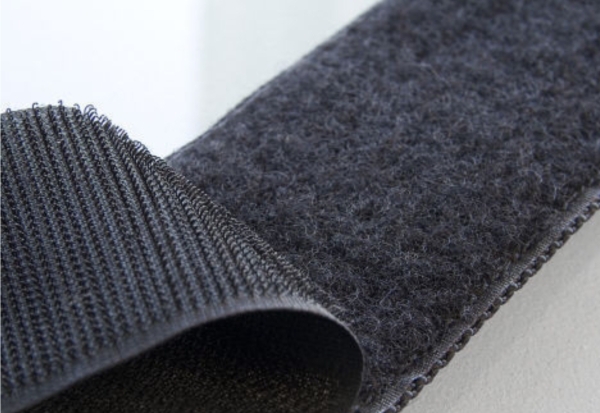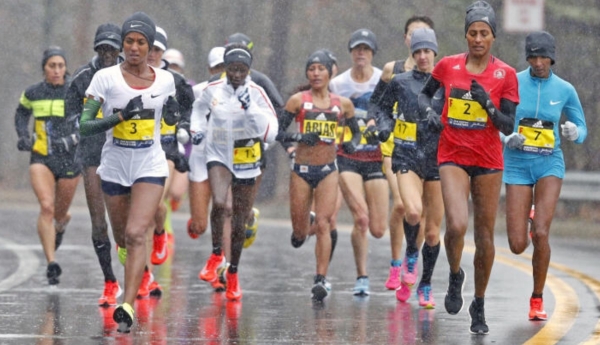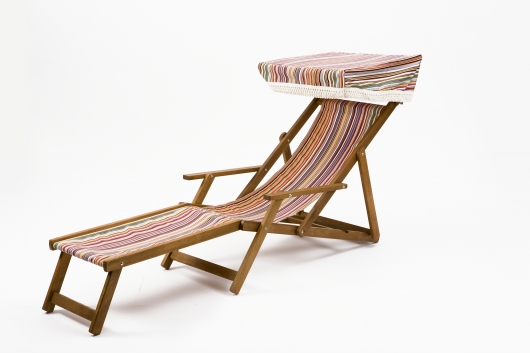I have just found the original of this piece written in 2003 – I couldn’t resist reposting it.
[2019 Addition: Aestheticons readers will know of my adoration of these characterful and timeless little cars – and their big sister the Citroen DS]
Having lain dormant for 12 months, the points having been flooded by previously abortive attempts to start her, I asked Mark Waghorn at MWR in Battersea – a 2cv expert – to give her a full service. I wasn’t about to undertake a trip across two international borders in a car that hadn’t run for a year.Booking on line the Dover/Calais leg I decided to play safe and also book a French Motorail trip from Calais to Toulouse. I tried to book the next leg on the Spanish equivalent from Barcelona to Malaga but that gets booked up seconds after going on sale, three months ago. So I had to face up to driving home from Toulouse – around 1500 km.
To make sure I got to Dover, I decided to drive there mid evening to find a B&B and wake refreshed for my 10.00 am crossing. At least I could push the car onto the Seacat, if necessary.
B&B’s in Dover now don’t really exist in any meaningful way. They have been seized by the Immigration Service to house the influx of asylum seekers. The locals now call the Old Folkestone Road, “Asylum Alley”.
I had visited the site of David Blaine’s most recent inexplicable stunt. He is encasement in Plexiglas overlooking new look London. His main views are the Mayor’s rotund office and the new Gherkin.
He had been boxed for 4 days and 21 hours by the time of my visit and was condemned to watch the British public hurling insults and golf balls at him as he slumbered scribbling in his journal. I would come to appreciate David’s predicament a whole lot more after my ensuing days of intimacy with Dolly’s minimal grey velour seats.
The mileometer at Dover read 66228.
The Seacat was a breeze – except for the loudest and most strident lady passenger who didn’t draw breath the whole of the one hour crossing. Her main pre-occupation was a solution to the asylum seeker problem. Perhaps she should be retained by the British and French Governments who thus far have struggled to solve this thorny issue.
I arrive at the Calais/Motorail terminus about six hours ahead of boarding. So if you have six hours to kill a visit to Calais centre ville is a must.
The Town Hall, is the home of the Rodin statue known as “the Burghers of Calais”. It features a number of wizened individuals bearing keys and such like. The depiction is of the proposed sacrifice of a few senior citizens of the town in return for Edward III lifting the blockade on food supplies. The old folk were saved by the swift actions of Queen Phillipa of Hainault – top aren’t they – those Essex girls.
Loading of the cars is a haphazard arrangement. The SNCF employee has never had the joy of driving a 2cv and stalls a couple of times before lurching Dolly’s into her resting place behind a Mercedes whose hazards are already flashing. The late evening calm is punctuated by screaming car alarms and the fulfilment of earlier placed orders for “pique nicque”. This is essential as we are told that the train has no catering facilities. The 20.30 pm train this evening is the last of the summer from Calais to Toulouse.
We set off 45 minutes late.
The carriage compartments on Wagonlits are box like – about as deep as I am tall – 6 feet – and close to four feet wide. There is something military about their regiment throughout the carriage there must be at least twenty or so cells. All the fabric seat covers, the ceiling, walls and blinds are all khaki.
The top bunk is open and very neatly turned down. There is a small oval basin with neat “Wagonlits” ancient publicity packed soap. Beneath the basin is a plastic commode which when its retaining door is closed deposits its contents directly onto the rails – via a wide mesh
There is a steward in a smaller cabin at the end of the carriage. He explains the operation of the lights and wakes you moments before you destination. For the rest of the time he smokes, drinks from short green cans of Heineken and read l’Express.
We are towing around thirty cars arranged on car transporter like carriages. At least six pairs of tiger’s eyes continue to flash and alarms sound. Their batteries will have nothing left to get their occupants to Beziers or Perpignan.
The first third of the bottle of Beaujolais Village bought at the station buffet and uncorked by their staff when picking up the excellent “pique nicque” kicked in shortly after departure. Sleep and Toulouse await.
Before dawn we arrive in Brive.
As first light breaks we are greeted by dense forests and quaint villages with their beautiful stone towers and red tiled roofs. We emerge from a long tunnel high over the Dordogne a stunning Norman chateau is perched high behind us.
We are following the Lot peppered with caravan sites through Cahors, with its stunning three squared towered stone bridge. Past low built houses fused onto higher and ancient pigeon lofts. Field after field of fruit trees and sunflowers discolouring in the late summer morning light.
We follow the back of several towns along the Canal into Toulouse. On every available space there is graffiti. One particularly good artist has “signed” more than fifty walls in a twenty kilometre strip with his distinctive “tag” the word, “Arse” – it cannot mean the same.
In Toulouse it takes an hour or so for the cars to be off loaded. Unfortunately, the road to Montpellier and Barcelona is shut “pour travaux” and a “diversion” takes us around the city to be released back onto the E80 an exit or two further out.
Finally, I am on the E80 “hurtling” at a maximum of 65 mph through Carcassonne, then Perpignan and over the Spanish border – where for some curios reason one of the Guard regards the car as of Italian origin and waves his arms shouting “avanti!”.
I am in Spain – well that was reasonably easy. I am about 250 kms into the journey and its late morning.
The peage through France may be costly but the Catalan tolls are even more expensive. At each toll booth driving a right hand drive car can be perilous. I have to stop, run around to collect the ticket or pay the fee and get back into the car before the barrier falls.
The E15 (the same road that runs through Malaga) is easy driving and Barcelona with its pistachio and baby pink tower blocks and canary and black taxis looms mid afternoon.
Barcelona has its own new Gherkin under construction complete with exterior crazy paved walls and incrementally small terraces for the top five or so penthouses.
On crossing the Plaza Cataluna, I spot a car park showing a “libre” sign so seek to enter. Shouting and waving ensues as the gate keeper explains that he does not allow right hand drive vehicles to enter as they tend to scratch the other cars – great logic.
La Rambla district has a “scalextric” shop with a huge window display and an artist in white robes and make up sitting on an un-plumbed loo. There is a wacky tiled Bullring and the famous multi-spired cathedral.
It’s worth a longer visit but come by train.
The exit road signs seem to refuse to use the same numbers as the official road numberings. They are replaced with a “C” preface. There are no signs for Tarragona – yet alone Valencia or Alicante. As a result, I get back onto the North bound E15 taking me probably 40 kms out of my way before I can change direction.
South of Barcelona become thick with grapes in the Penedes region – grapes then rock and then open plains as I head towards the hilariously named Tossa del Mar and onto Peniscola!
Arriving in the Comunitat de Valencia every available square meter is planted with orange and lemon trees.
I have seen 11 magpies by this time. After “10’s a bird you must not miss” does it start at “One for sorrow” again?
Having exceeded the boundary of my boredom threshold and with fading light I decide to stay at a road side hostel near Castellon.
I am back on the E15 by 7.30 am and by 8.00 the sky is blood orange.
I have already seen two magpies – “joy” – that’s good.
I wait until 9.00 am – it is Sunday after all – before the first of many calls to the family. At one point they were every half an hour as boredom really set in.
I scoot past the huge Valencian tile and porcelain factories and hill top fortresses.
Rainbow coloured pipes extend over the road to greet your arrival in Valencia. Your departure is marked by a road side flock of monochrome metal sheep.
The Manhattan skyline of Benidorm is incongruous but rising as it does majestically above an arid plain I guess it’s the closest thing Spain has to Las Vegas.
The heat of the roasting road is seeping into the car and I am drinking probably a litre of water an hour.
Two more magpies.
Clearing the toll booth at Alicante – a hiccup.
For a while I have been trying to ignore that Dolly is over revving. The only way to stop it is to lift the accelerator pedal with your foot. As I leave the toll booth she’s screaming, so I pull over and lift the bonnet.
She cools quickly and I notice that a spring has rusted away and is lying against the engine casing. A quick clip and twist with my Swiss army knife’s pliers and a new spring is formed. It works perfectly allowing the accelerator cable to return. Now could you do that in your Land Rover or Audi? I don’t think so.
As my wife will tell you, my mechanical skills are minimal, so I am feeling a sense of achievement as Mark Waghorn confirms over the phone that I have cured the problem.
There follows a lengthy stretch passed Murcia towards Almeria where an arid moonscape has been created by the constant excavation of the hills to provide a raw material for the Curtidos factories.
A fifth magpie.
The mileometer hits 66666 so I speed up to 66 mph to give some shape to this numerical wonder.
I am very, very bored by the drive now but hearing my family’s voices – for the 10th time today – stirs me on. I have by now lost count of the number of times I have filled Dolly’s tiny fuel tank or paid toll charges.
The whole of the Eastern Costa del Sol is under plastic tarpaulins. This region is known by the locals as “the Plastic Sea”. For such a shrouded area there’s little surprise that a local town is named “Vicar”
The first signs for Malaga –219 kms. At last!!!
About 120 kms from Malaga the Autovia del Sol – the main trunk road from Barcelona to Algeciras becomes cobbled – well not quite. It is stopped by traffic lights outside the tented suburbs of Motril.
The E15 becomes a charming twisty road through some very picturesque – and some not so – white villages. It reminds me of the old Corniche along the Côte d’Azur.
Eventually we are forced to hill climb. Only a couple of times approaching hills around Alicante was I required to change down a gear, I now have to take most of the next ten miles in second. The far sides of such ridges are a roller coaster for a 2cv. Dolly may be unhappy on steep gradients but the trip down is hairaising. The turning circle and cornering are dire. I am convinced a couple of corners are taken on two wheels.
Finally, I am onto the all too familiar stretch passing Malaga airport.
The mileometer reads 67299. I can hardly believe I’ve done it – in two days with about twelve hours a day behind the wheel – or should that be behind a juggernaught.
![]()
![]()


























